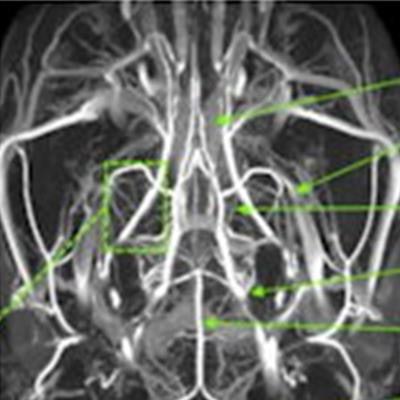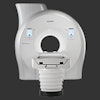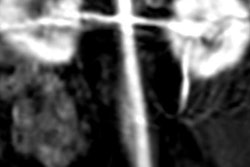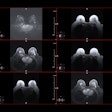
South Korean researchers have developed Supramolecular Amorphous-like Iron Oxide (SAIO), a new nanoparticle-based MRI contrast agent designed to provide high-resolution 3D vascular mapping.
In research published on March 8 in Nature Biomedical Engineering, researchers led by Cheon Jinwoo and Choi Byoung Wook of Yonsei University in Seoul shared results from a study comparing SAIO's contrast performance, retention, and renal clearance profile with those of gadolinium-based agent Dotarem and iron-oxide nanoparticles.
SAIO clearly identified brain microvessels as thin as a hair (100 microns) in animal experiments and its enhancement lasted over 10 minutes, compared with less than two minutes for Dotarem, according to the researchers. In addition, they said that SAIO enabled observation of heart blood vessels that were hardly visible with other contrast agents. Finally, SAIO was stable without aggregation or iron leaching for up to a year, according to the researchers.
 (a) High-resolution 3D MRI brain vascular map using SAIO. Various blood vessels in the rat brain can be visualized. In addition to clinically important brain vessels (including anterior cerebral artery, middle cerebral artery, posterior cerebral artery), fine vessel structures as thin as 100 microns in diameter can be clearly visualized. (b) 3D MRI brain vascular map using Dotarem (gadolinium-based contrast agent). Resolution is low and microvessels are not visible. (c) For 3D reconstruction, multiple slices of MRI images of the rat heart were obtained after injection of SAIO. Rat coronary arteries (180 microns), which are 10 times thinner than human coronary arteries, were successfully visualized. Image and caption courtesy of Yonsei University's Institute for Basic Science.
(a) High-resolution 3D MRI brain vascular map using SAIO. Various blood vessels in the rat brain can be visualized. In addition to clinically important brain vessels (including anterior cerebral artery, middle cerebral artery, posterior cerebral artery), fine vessel structures as thin as 100 microns in diameter can be clearly visualized. (b) 3D MRI brain vascular map using Dotarem (gadolinium-based contrast agent). Resolution is low and microvessels are not visible. (c) For 3D reconstruction, multiple slices of MRI images of the rat heart were obtained after injection of SAIO. Rat coronary arteries (180 microns), which are 10 times thinner than human coronary arteries, were successfully visualized. Image and caption courtesy of Yonsei University's Institute for Basic Science.SAIO's nanoparticle is 5 nanometers and consists of a polysaccharide core made primarily with dextran cross-linked with other molecules. The core is coated with an iron oxide surface to give it paramagnetic properties at room temperature, the researchers said.



















